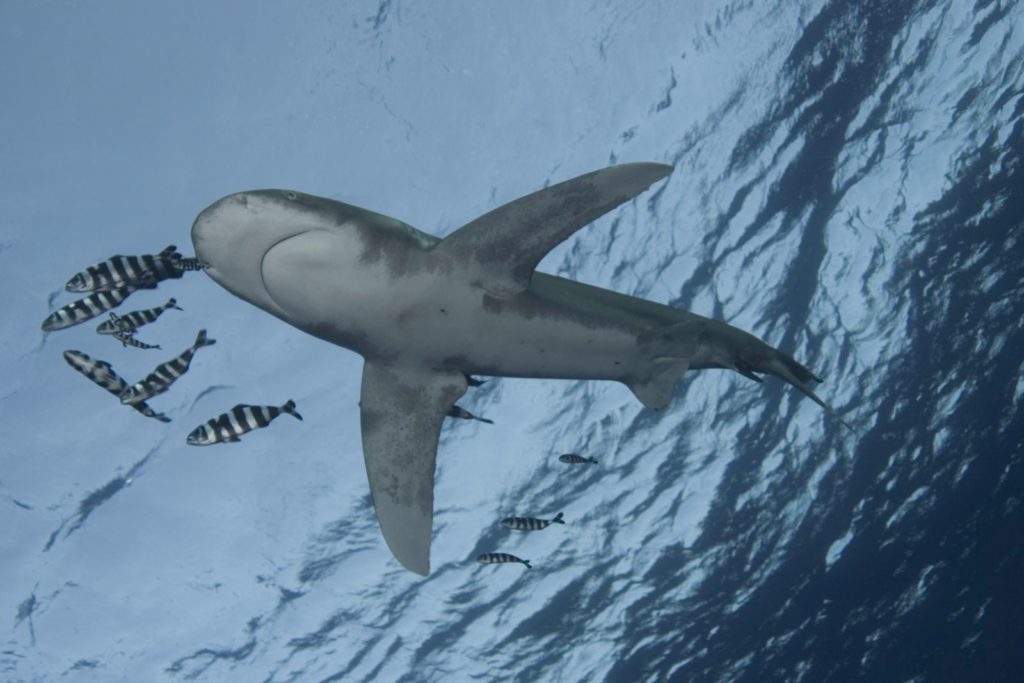One of the most important global meetings on wildlife trade has just wrapped up in Uzbekistan. It’s capital city Samarkand was where governments convened for the 20th Conference of the Parties (CoP20) to the Convention on International Trade in Endangered Species of Wild Fauna and Flora (CITES) to decide how international trade should be managed for some of the world’s most threatened...
The slim, sleek and slender blue shark (Prionace glauca) is one of the most wide-ranging sharks in the world. It is a pelagic creature, meaning it prefers the sunlit upper layers of the open ocean, far from any shallows and further from any land. A blue shark will spend its life traversing the endless teal, in a never-ending quest for food.
The open ocean is a vast marine desert, and sources of food can be few and far between. As a dominant predator in these habitats, the blue shark has developed an opportunistic diet feeding on everything from fish and squid, to birds and whale carcasses. A mature blue shark can reach lengths of 2 – 3 metres (6 – 10 ft.) and weighs from 50 – 100 kgs. They are an especially fecund shark, with females giving birth to live litters of up to 100 pups.
Because of their global distribution, relatively high fecundity and the fact that the blue shark shares its habitat with tuna (the most valuable and sought after fishes in the sea), it has become the single most fished shark in the world. Though their meat is not particularly desirable, and blue sharks are not specifically targeted by fishers, experts estimate that 10 – 20 million blue sharks are caught and killed in world fisheries each year. They are most often caught as bycatch (when you catch a species you are not targeting), but many blue sharks are kept as byproduct. Byproduct is when a fishery catches something other than its target, but that catch is retained, either part or in whole, and sold. Though the flesh has little value, the fins of a blue shark are a different story. The demand for “shark-fin soup” throughout Asia has led to a lucrative and often illegal trade in shark fins. According to a study by John Stevens et al. 2010, blue shark fins make up 15 – 30% of the fin trade each year. The high intensity of tuna fishing and demand for shark-fin soup has led to major declines in blue shark populations throughout the world’s oceans.
In the hope of promoting international cooperation in the conservation of blue sharks, the species has been proposed for listing on the Convention for the Conservation of Migratory Species (CMS). Composed of 120 nations, this listing would mark a significant win for the blue shark, and real hope for the future of this species.

Currently, the Advisory Committee for the CMS believes that Regional Fisheries Management Organizations (RFMOs) are doing enough to protect blue sharks, but sadly, they are not. It is now up to us, as well as concerned delegate nations to turn this tide and win protection and cooperation for blue sharks. Their fate will be decided at the CMS Sharks meeting in Monaco this week. I will be in attendance representing Humane Society International, and provide a championing voice for the blue shark.
Blue sharks are not the only species being considered for listing. The critically endangered Angelshark (Squatina squatina) was proposed, but again the Advisory Committee has recommended against its listing. This time they’ve cited a lack of migration, despite its range extending through multiple jurisdictions. As a bottom-dwelling species, angelsharks are heavily impacted by trawling fisheries that have decimated populations in the Mediterranean and North Atlantic. International cooperation promoted by a listing on the CMS would go a long way towards helping this imperilled species.
The CMS Advisory Committee has suggested the listing of another 7 species, all of which will certainly benefit from the international cooperation provided by listing:
- Dusky shark (Carcharhinus obscurus)
- Common guitarfish (Rhinobatus rhinobatus)
- White-spotted wedgefish (Rhynchobatus australiae)
- Oceanic whitetip shark (Carcharhinus longimanus)
- Smooth hammerhead shark (Sphyrna zygaena)
- Smoothnose wedgefish (Rhynchobatus laevis)
- Giant guitarfish (Rhynchobatus djiddensis)
Once listed, these species will become the focus of cooperative international conservation in the waters of the countries in which they live. CMS listing will determine policy and provide guidance through Strategic Plans, Action Plans, resolutions, decisions and guidelines. These are the most powerful instruments we have in conserving a future for these species.


